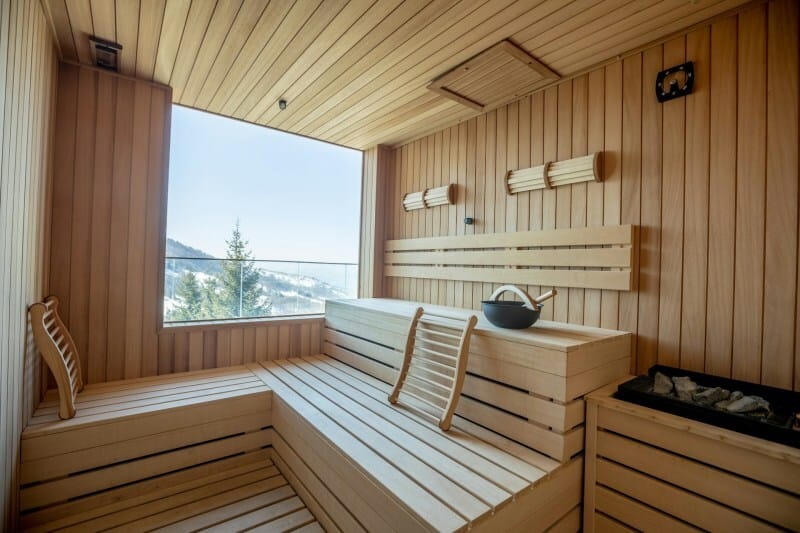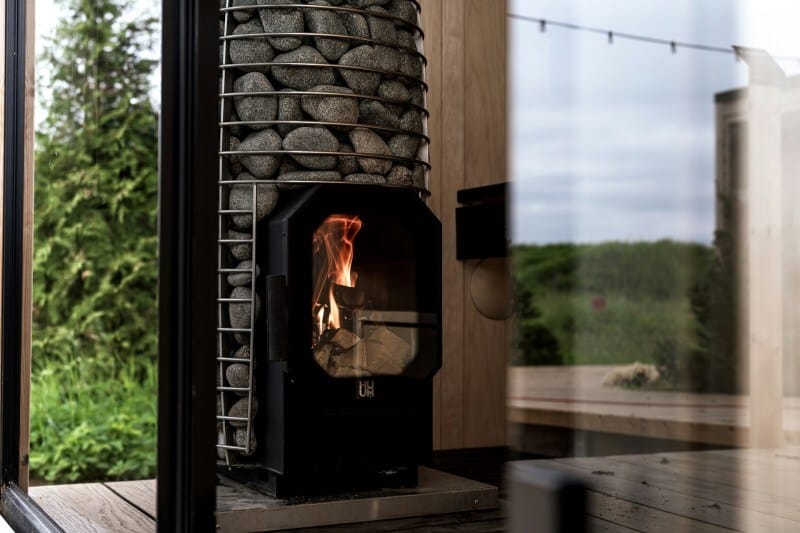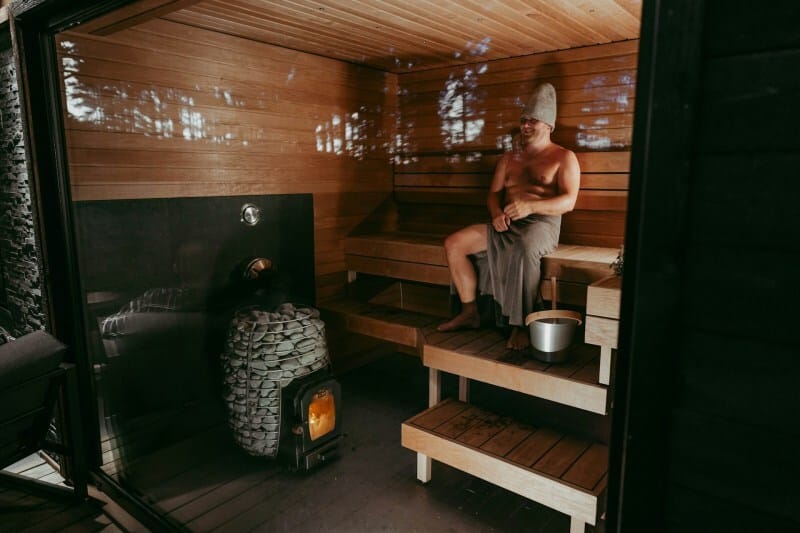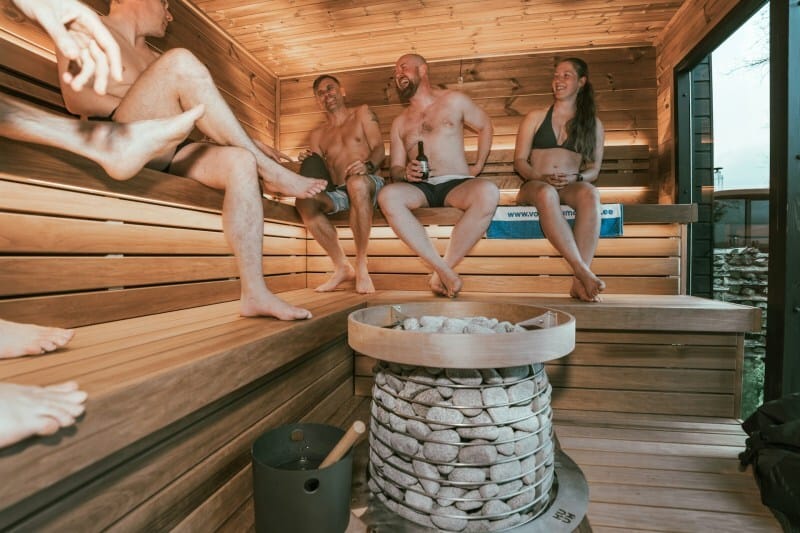Imagine stepping from your home office into the hiss of water hitting volcanic stone, where the scent of cedar replaces the blue light of screens. For many of us in 2025, this isn’t fantasy—it’s necessity.
The wellness economy is shifting. Luxury now means purpose over excess, and sustainable practices over performative gestures. Our homes, once sanctuaries, have become extensions of our workplaces, humming with the constant demand of connectivity. We need spaces that demand our presence differently.
The outdoor sauna answers this need. It’s a threshold between worlds: a small, perfect structure that asks nothing of you except that you sit still and sweat.

A Study in Deliberate Design
An outdoor sauna isn’t an impulse purchase. It’s a commitment to craft and place—a structure that responds to landscape, to season, to your specific corner of the world.
The best examples draw from Scandinavian restraint or Japanese wabi-sabi: raw materials meant to weather beautifully. Cedar weathers to silver. Charred shou sugi ban siding deepens with age. These aren’t maintenance failures—they’re the point. The structure becomes part of its environment.
A single window frames the view outside. In winter, bare branches against snow. In summer, the shifting green of leaves. The architecture is simple because it’s meant to direct attention outward and inward, never to itself.
Good design here means understanding how wood breathes, how heat moves, how ventilation prevents rot while maintaining warmth. It’s biophilic design in its most direct form: touch, sight, heat, all tethering you to something older than notifications.

The Case for Fire
Electric heaters are convenient. Push a button, wait twenty minutes, step inside. But convenience isn’t always what we’re missing.
A wood-burning heater requires something different. You split wood or stack what you’ve gathered. You build the fire, tend it, wait for the stones to absorb enough heat. The ritual takes an hour, sometimes more.
This isn’t inefficiency—it’s the point. The act of preparation becomes part of the experience. You’re collaborating with the element, not commanding it.
There’s an environmental consideration too. Wood from sustainable sources burns cleaner than the grid-powered alternative in many regions, though the calculation depends on your location and energy mix. What’s universal is the cognitive shift: choosing renewable fuel that demands your participation feels different than outsourcing heat to invisible infrastructure.
For those drawn to this approach, an eco-friendly outdoor sauna built around wood-fired heat represents a complete philosophy—one where the energy source itself becomes part of the restorative practice rather than a hidden utility.
The fire makes the sauna earn its place. You can’t rush it. You can’t optimize it. You simply wait, and in waiting, you’ve already begun to decompress.

Heat Without Hustle
The wood-fired sauna exists outside the optimization trap that defines so much modern wellness. There’s no heart rate to monitor, no zones to hit, no data to track.
The heat does work your body can’t fake: circulation improves, heat shock proteins activate, muscles release. But the deeper benefit is psychological. The crackling fire replaces notification sounds. The close wooden walls create enforced solitude. For twenty minutes or forty, you’re unreachable.
This is what analog wellness actually means—not a rejection of technology wholesale, but the deliberate creation of spaces where it can’t follow. The outdoor structure helps: four walls between you and your phone, charging in the house.
After months or years of this practice, the change isn’t dramatic. It’s cumulative. You sleep better. Your baseline anxiety drops. You remember what it feels like to be bored, then to move past boredom into something quieter.

An Investment in Attention
A wood-fired sauna costs more upfront than a gym membership or meditation app subscription. But it’s not discretionary spending—it’s infrastructure for a different way of living.
The structure sits in your yard, waiting. On difficult days, it’s there. On ordinary days, it’s there. The permanence matters. You’re not trying to hack your way into wellness or biohack your way out of burnout. You’re building a practice that acknowledges the body’s older needs: heat, silence, darkness, rest.
This is what intentional design looks like at human scale. Not a smart home system promising to optimize your environment, but a wooden box that does one thing perfectly. It makes you stop.
The best luxury has always been time and attention returned to their owner. The sauna delivers both, one fire at a time.
The post The Elemental Unplug: Why the Wood-Fired Sauna is the Architectural Answer to Digital Burnout appeared first on Moss and Fog.
